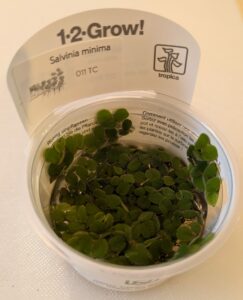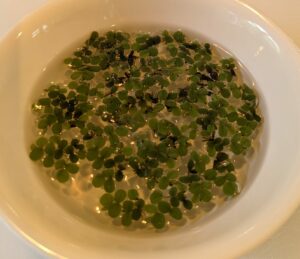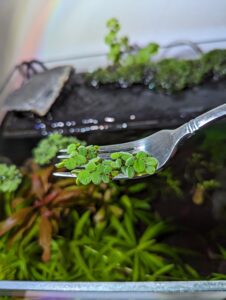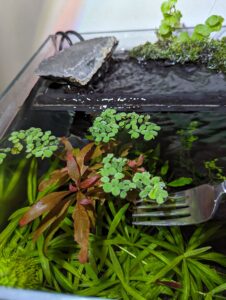I have been considering floating plants for a while, but they always looked kind of big and dangly and nasty to me which has put me off. Then the Aquatic Plant Society had a get together at Aquarium Gardens and I saw this pretty new (to me) much smaller floating plant from Tropica: Salvinia minima. I picked up a pot to try it out in the Shrimphaus.
It’s a floating plant, so “planting” Salvinia minima is dead-easy. Starting with an in vitro pot, you rinse off the media it came with and then I floated it in a bowl of clean water and forked it over into the Shrimphaus.
Salvinia minima or is that Salvinia auriculata?
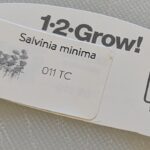
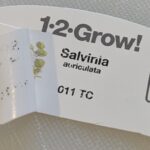
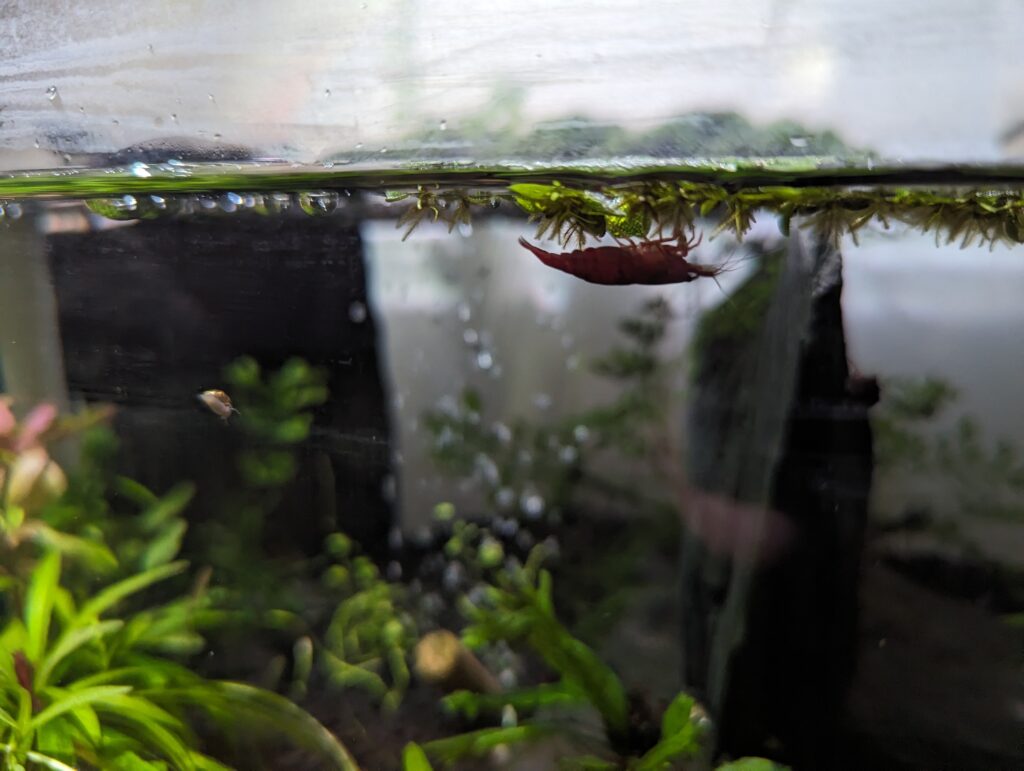
Interestingly, the label on the pot from Tropica had a sticker on it saying ‘Salvinia minima’ but then peeling that off revealed the printed label for ‘Salvinia auriculata’. Which is it? Apparently if you look really closely at the slightly furry-looking upper surface that repels water to keep the plant upright, there are structural differences between the two. As the name also suggests, Salvinia minima has smaller leaves than Salvinia auriculata. When you look into the classification a little more, it turns out both are types of fern, where the bottom-pointing “roots” are actually themselves leaves.
Floating plants can monitor fertiliser status
Salvinia minima in action
Getting levels of fertiliser right can be challenging in aquascaping. A nice thing about floating plants is that because they are able to capture CO2 from the air, if the other macro and micro fertilisers are sufficiently present the floating plants will grow vigorously. Conversely, a nutrient deficiency (for example iron) will also show up quickly and obviously. This is less true for submersed growth plants that are usually limited by CO2 availability in a low-tech setup where it takes longer to observe and diagnose nutrient deficiency problems. Using floating plants to monitor plant nutrients this way has been popularised by Darrel on UKAPS as the “duckweed index“, this is an idea that has been catching on in the community for a while now. Any floating plant will work – using duckweed itself is actually a pretty terrible idea since it is difficult to control – the usual recommendation is for Amazon frogbit instead.
